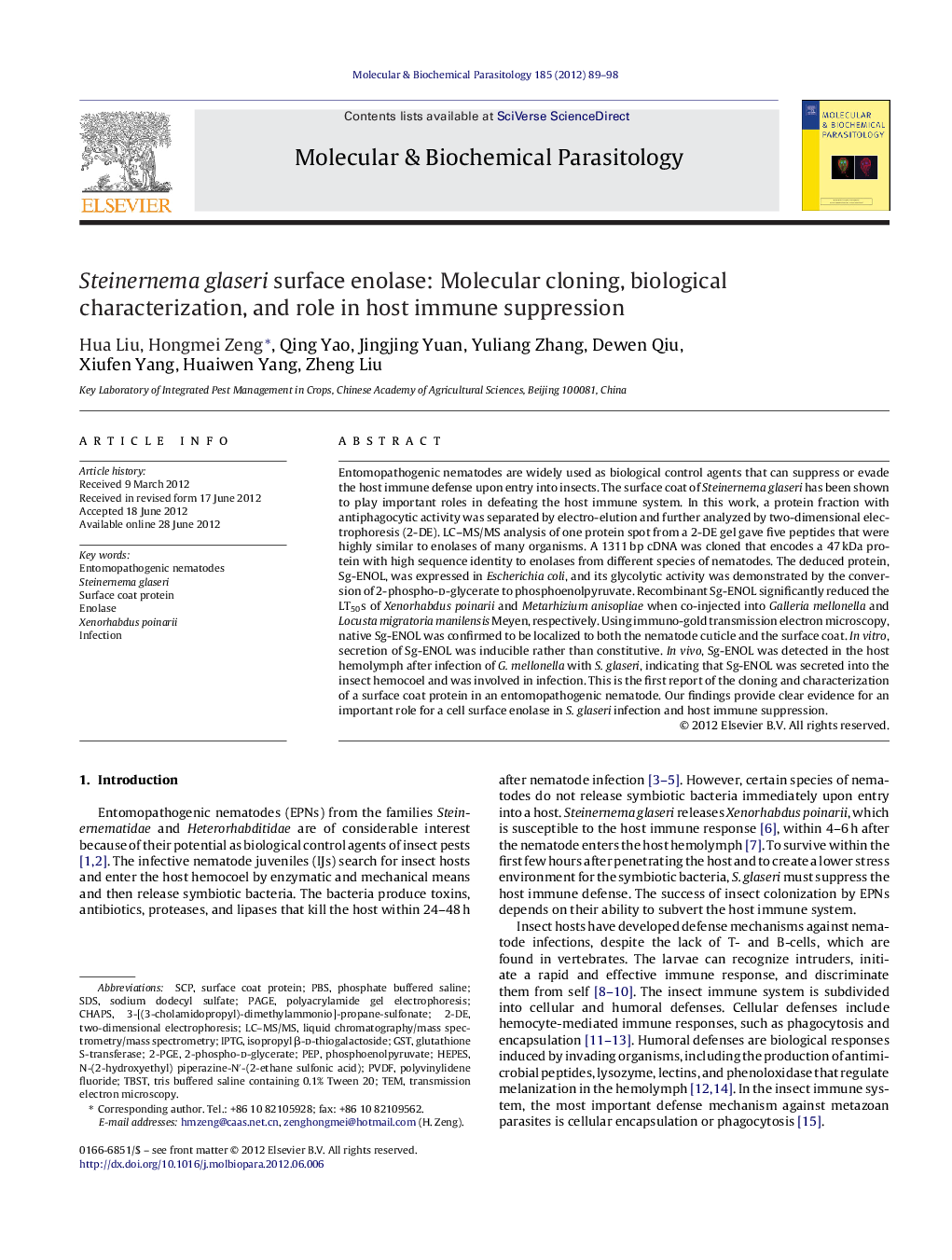| کد مقاله | کد نشریه | سال انتشار | مقاله انگلیسی | نسخه تمام متن |
|---|---|---|---|---|
| 5915607 | 1163314 | 2012 | 10 صفحه PDF | دانلود رایگان |

Entomopathogenic nematodes are widely used as biological control agents that can suppress or evade the host immune defense upon entry into insects. The surface coat of Steinernema glaseri has been shown to play important roles in defeating the host immune system. In this work, a protein fraction with antiphagocytic activity was separated by electro-elution and further analyzed by two-dimensional electrophoresis (2-DE). LC-MS/MS analysis of one protein spot from a 2-DE gel gave five peptides that were highly similar to enolases of many organisms. A 1311Â bp cDNA was cloned that encodes a 47Â kDa protein with high sequence identity to enolases from different species of nematodes. The deduced protein, Sg-ENOL, was expressed in Escherichia coli, and its glycolytic activity was demonstrated by the conversion of 2-phospho-d-glycerate to phosphoenolpyruvate. Recombinant Sg-ENOL significantly reduced the LT50s of Xenorhabdus poinarii and Metarhizium anisopliae when co-injected into Galleria mellonella and Locusta migratoria manilensis Meyen, respectively. Using immuno-gold transmission electron microscopy, native Sg-ENOL was confirmed to be localized to both the nematode cuticle and the surface coat. In vitro, secretion of Sg-ENOL was inducible rather than constitutive. In vivo, Sg-ENOL was detected in the host hemolymph after infection of G. mellonella with S. glaseri, indicating that Sg-ENOL was secreted into the insect hemocoel and was involved in infection. This is the first report of the cloning and characterization of a surface coat protein in an entomopathogenic nematode. Our findings provide clear evidence for an important role for a cell surface enolase in S. glaseri infection and host immune suppression.
143Highlights⺠We identify an enolase from immunosuppressive surface coat proteins of Steinernema glaseri infective juveniles. ⺠Recombinant Steinernema glaseri enolase increases virulence of Xenorhabdus poinarii and Metarhizium anisopliae significantly. ⺠Enolase locates on both nematode cuticle and surface coat of Steinernema glaseri. ⺠Steinernema glaseri secrete enolase to host hemocoel during infection.
Journal: Molecular and Biochemical Parasitology - Volume 185, Issue 2, October 2012, Pages 89-98